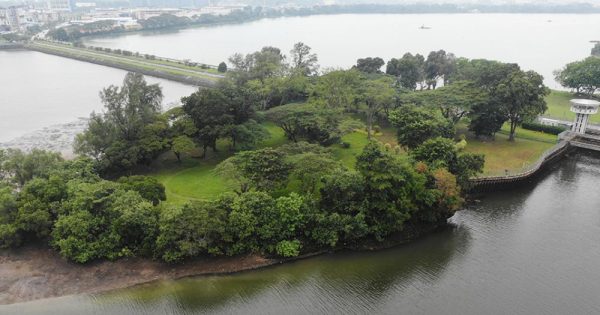The Environmental Impact Assessment (EIA) for Singapore’s largest floating solar power plant project has been concluded. The EIA was commissioned by the Economic Development Board (EDB), a statutory board under the Ministry of Trade and Industry of the Government of Singapore that plans and executes strategies to sustain Singapore as a leading global hub for business and investment.
The EIA aimed to examine the project’s feasibility and potential environmental impact since its site, Kranji Reservoir, is situated close to various ecologically sensitive areas, such as the Kranji Marshes, the Sungei Buloh Wetland Reserve, and Mandai Mangrove and Mudflat and it is home to diverse groups of species.
Environmental Resources Management (ERM), a leading global provider of environmental, health, safety, risk, social consulting services and sustainability-related services carried out the EIA. According to the EIA report, the project’s environmental impacts due to construction and operations can be “adequately managed” with certain mitigation measures.
Measures put in place to mitigate the impact of Singapore’s largest floating solar power plant project implementation and operation
These measures include the construction of Singapore’s largest floating solar power plant on only 21.5 per cent of the reservoir’s surface area.
Additionally, the report recommends reconfiguring each cluster of solar panels so that areas frequented by foraging birds are avoided. Reportedly, this will also help to mitigate potential impacts to water quality, which may indirectly arise due to the lack of light penetration, and changes to wind drag and heat exchange.
The large solar photovoltaic clusters will also be broken up into smaller ones to create 30 meters to 40 meters corridor. These corridors will allow for the plant’s operational vessels to pass through as well as ensure access for emergency Singapore Civil Defence Force boats.

Furthermore, the report recommended that a 50-meter boundary be established between the panels and the western shoreline to give sufficient leeway for birds that dive along the shoreline. Other mitigation measures include minimizing the use of lighting during operations and implementing a biodiversity monitoring programme.
According to reports, the report findings and plans were as a result of consultation with public stakeholders, nature groups and government agencies.
Expectations of the Kranji Reservoir floating solar power plant
The construction of Singapore’s largest floating solar power plant is now set to begin in 2025. The facility will be an in-reservoir Floating Photovoltaic (FPV) system featuring PV panels, power conversion units, anchoring systems, connector cables, and an operational and maintenance berthing facility for boats, among other on-site components and facilities.
Upon completion, it is expected to be able to produce 141 megawatt-peak (MWp) of clean energy in Singapore, the equivalent of 112.5MWp when converted to AC. Reportedly, the latter is the voltage used by the electricity grid and most of Singapore’s electrical appliances.
When it enters into operation expected in 2027 or 2028, the Kranji Reservoir floating solar power plant will contribute to 7.1 per cent of Singapore’s target of achieving 2,000 MWp of solar power generation by 2030.
Also Read
Singapore begins construction of world’s largest inland floating PV system.
Construction of Isère’s first floating solar power plant begins at Saint-Savin
